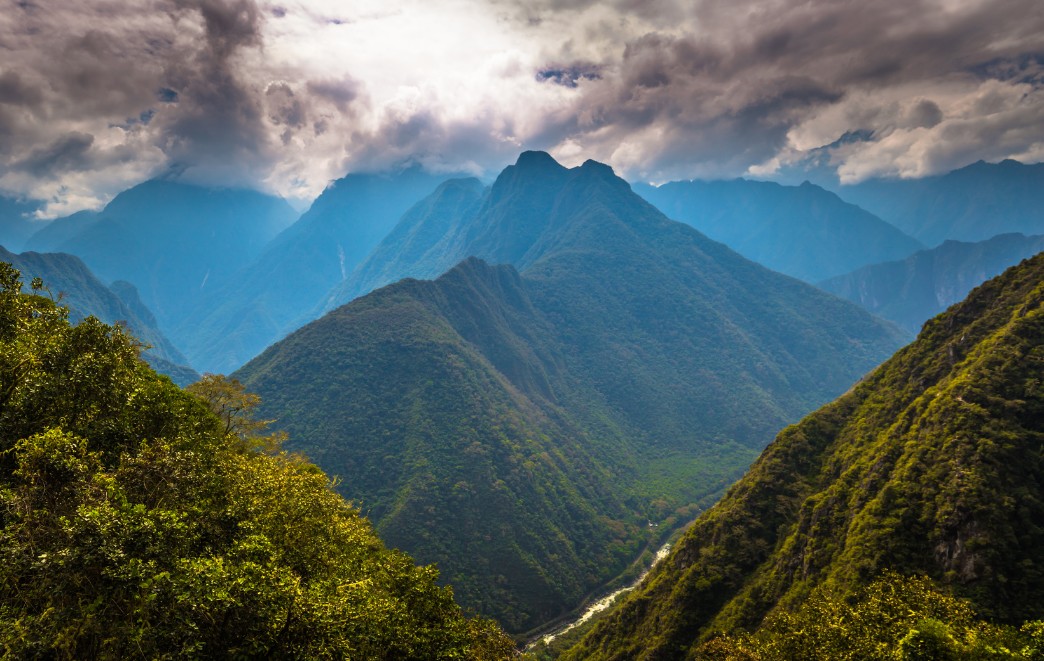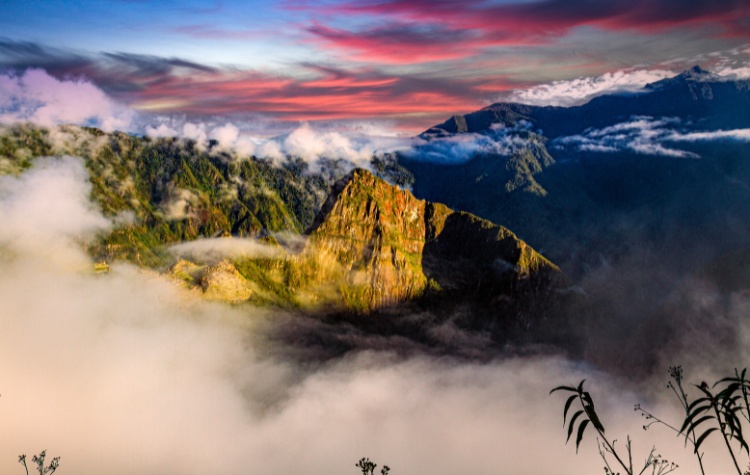
The Inca Trail hike is one of the main reasons why many people choose Peru for an adventure trip. It offers the rare chance to walk along old Incan paths, following the same sacred route from Cusco to Machu Picchu that the Incas took more than 500 years ago.
Many people feel an almost mystical energy as they advance along the route’s dirt trails and cobblestone paths, all hugged by towering peaks and stunning landscapes. To experience the Inca Trail hike to its fullest, read on to discover the history, various routes, tips for obtaining a permit, and more.
All About the Inca Trail Hike To Machu Picchu

• History of the Inca Trail
The Inca Trail was outlined by the Incas during the 15th century as a spiritual pilgrimage route to the Machu Picchu citadel. Because of its challenging topography, researchers believe that the Incas used the Classic Inca Trail route to pay respect to the apus (sacred mountains) such as Veronica, Wakaywilka, and Salkantay. Meanwhile, various other trails lead to Machu Picchu across smoother terrain, which would have been ideal for the common transportation of livestock and goods.
The now iconic trek is just one part of the massive, 30,000-kilometer Qhapaq Ñan system of roads that connected the sprawling Inca Empire. The popularity of the classic Inca Trail hike lies not only in the jaw-dropping scenery and physical challenge, but perhaps more so in the lingering mystic energy of the Incas that accompanies hikers from the starting point to the Sun Gate.
• Inca Trail Hiking Routes

With steep inclines, sharp descents, and constant changes in altitude, the Inca Trail is suitable for travelers who are in reasonably good physical condition. Whether you are looking for a trail experience that is shorter or longer, perhaps less difficult or even more of a challenge than the Inca Trail, there are an assortment of Machu Picchu hikes.
A short 2-day/1-night alternative to the typically 4-day trek is ideal for travelers who want a slightly less intense version of the Inca Trail experience. Covering 8 miles (13 kilometers), this trek begins at kilometer 104 of the railroad and leads to the Wiñaywayna archaeological site where it connects to the Classic Inca Trail route.
It is also possible to extend your Inca Trail to Machu Picchu hike to 5 days and 4 nights. This itinerary begins with a later start on day one which helps avoid the rush of hikers. In fact, you’ll hit most of the main trail points when the crowds are low. You will also have an extra day to acclimate before reaching the trail’s highest point, Dead Woman’s Pass.
Looking for an alternative? On the other end of the physical spectrum is the Salkantay trek, a thrilling adventure that takes between 5-8 days to complete. Often considered more scenic and challenging than the Inca Trail, this trek snakes through the Mollepata Valley and gifts travelers with views of the staggering 20,569-foot Salkantay peak- the tallest mountain in the Vilcabamba range. The Santa Teresa hot springs await hikers at the midway point for a well-deserved soak.
• The Classic 4-Day Inca Trail Trek

The so-called Classic Inca Trail hike begins at kilometer 82 of the Machu Picchu train tracks, just outside of the Sacred Valley town of Ollantaytambo, and ends at the Sun Gate. Stretching 26 miles (43 kilometers) of often steep and rugged terrain, this route typically takes hikers 4 days and 3 nights to complete.
It’s recommended that travelers take about two or three days to acclimate to the altitude before beginning the trek, be it in Cusco city or in the Sacred Valley. The high elevation adds a further challenge to what is already a serious trek.
The popular trail includes two high passes: Warmiwañusca, meaning Dead Woman’s Pass, and a second one at Runkurakay. The highest point of the Inca Trail, Warmiwañusca is situated at a breathtaking 13,780 feet (4,215 meters) above sea level, while Runkurakay reaches 13,123 (4,000 meters).
The Inca Trail winds through various different landscapes and ecosystems, making it one of the most diverse treks in Peru. Private Inca Trail tours begin in the lush Sacred Valley at an altitude of 9,000 feet (2,750 meters). On the second day, the trail heads upwards into the sparse highlands where the landscape is harsher and contains minimal vegetation.
Day three of the Inca Trail trek brings you to a beautiful cloud forest as you begin your descent toward Machu Picchu. This ever-changing landscape makes this hike especially memorable, plus offers some fantastic photo opportunities along the way. Some of the flora you’ll see during this portion of the trek includes Andean orchids of all shapes, sizes, and colors. If you’re lucky, you may catch a glimpse of the Andean spectacled bear.
The ruins, landscapes, flora, and fauna that you’ve passed so far have only heightened the anticipation of reaching the most impressive ruin of them all. An early start to the hiking day will allow you to watch the sunrise as you look over Machu Picchu from Inti Punku, the Sun Gate. After a well-earned rest to take in the view, the descent into the citadel begins.
• Best Time to Visit

Though Peru has two seasons, wet and dry, it is possible to hike the Inca Trail at any time of year. Your Kuoda travel expert will tell you that each season makes for a unique Inca Trail experience.
The wet season typically lasts from November to April and sees far less tourism than the dry season. This is excellent news for those preferring fewer crowds along the trails as well as the citadel. Keep in mind that muddy trails make for a more difficult and perhaps uncomfortable experience (in the case of heavy rainfall).
From May to October, the weather is generally dry and is preferred among the majority of hikers. And this is evident in the number of hikers along the trails, especially between June and August. Although the days will be sunny, nighttime temperatures drop significantly, so you will want to pack accordingly.
One additional ‘season’ that should be mentioned is the shoulder season. The months that see low tourism yet enjoyable weather are April (at the tail-end of the wet season), September, and October (a post-U.S. summer break when the climate is still dry). If your schedule is flexible, plan to hike the Inca Trail during one of these three months!
• Inca Trail Hike Permits

The popularity of the trail has led to concerns about the damage caused by large numbers of visitors. To help manage this issue, the Peruvian government began enforcing a limit of 500 visitors per day. This count includes both trekkers and support staff, such as guides, porters, and cooks, which breaks down to about 200 trekkers and 300 staff per day. Keep in mind that permits for the trail are not transferable or refundable once purchased, so it’s important to be certain of your dates before you book.
The best approach is to contact a tour operator to book the permits as soon as you decide when you’ll be traveling to Peru. This is particularly essential during the high season months of June, July, and August when permits for certain dates can sell out five or six months in advance. To get a sense of the demand for permits on certain travel dates, you can go to www.machupicchu.gob.pe and click on the “Consultas” tab. Select “Camino Inka” from the Centro Arqueologico drop-down menu, and then the year (“Año”) and month (“Mes”) to see the number of permits still available for that time period. Keep in mind, however, that you will not be able to book your own permits because this can only be done by a licensed operator such as Kuoda Travel.
Many experienced hikers consider the Inca Trail to be ultimately unrivaled by any other trek in Peru; that said, the Salkantay Trek or Lares Trek are both equally rewarding alternatives.
• What To Bring

The key to packing for your Inca Trail trek to Machu Picchu is to pack as efficiently as possible. This sounds simple to do, but keep in mind that you will need to pack for two seasons: either sunny or slightly rainy days and cool nights. Luckily, the majority of what you packed for your trip to Peru will stay behind in your hotel in Cusco or in the Sacred Valley for the time you are off on your adventure. Not only that, but our team of local guides and porters will be in charge of carrying the camping and cooking gear.
Here are a few essential things to pack for the Inca Trail:
-
- Passport
- Waterproof hiking boots
- Waterproof jacket
- Fleece jacket
- 3 T-shirts
- 2 long sleeved shirts
- Underwear for each day
- 1 set of thermal pajamas
- 1 pair of hiking socks per hiking day
- 1 pair of lightweight hiking pants
- 1 pair of lightweight hiking shorts
- Beanie
- Sun hat
- Sunglasses
- Sunscreen
Plan Your Next Peru Adventure With Kuoda
Classic private Inca Trail tours provide the opportunity to spend four days walking in the footsteps of the Incas and connecting with this ancient civilization. If you have the physical stamina and drive to accomplish what is a bucket-list item for many international travelers, take the opportunity to include the Inca Trail hike on your personalized Peru itinerary with Kuoda!
Contact your travel designer at Kuoda Travel to learn about our luxury tours to Machu Picchu. Providing exceptional customer service and tours tailored to your specific needs and interests, we think you’ll agree that we’re the best tour operator in Peru.
Peru’s Northern Beaches Travel Guide: Your Adventure-Filled Getaway
Bask in the northern BEACHERGOER’S PARADISE, With its dependable year-round sunshine, pristine coastline, s...
Read PostThe Most Eco-Friendly Hotels in South America For The Responsible Traveler
For the eco friendly hotels in South America, responsible travel in hospitality is not just a trend but a nece...
Read PostExplore Peru’s Sacred Valley: A Journey Through Incan Wonders
Experience a land BLESSED BY INCAS, Tucked away in the Andean foothills of Peru lies the historic Sacred Vall...
Read Post

 Call
Call 























